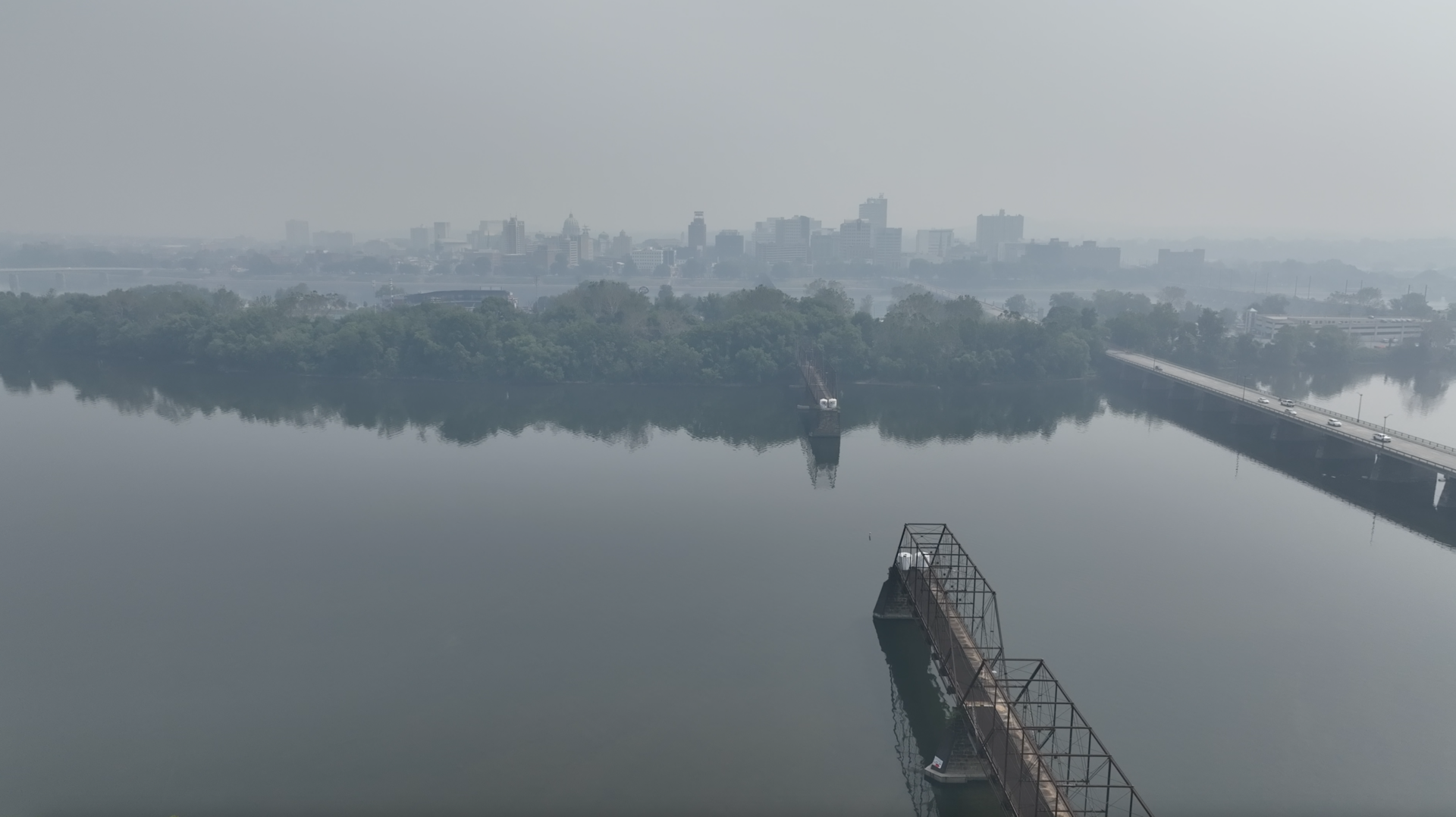
The skyline of Harrisburg on June 8, 2023
Doug Watson, WITF

The skyline of Harrisburg on June 8, 2023
Doug Watson, WITF

Doug Watson, WITF
The skyline of Harrisburg on June 8, 2023
Airdate: Friday, June 9, 2023
This has been a week like no other in Central Pennsylvania. Smoke from wildfires in Canada enveloped the region and most of the northeastern part of the country this week. The smokey haze led to air quality warnings, unhealthy air, more people staying inside – even with pleasant temperatures and low humidity – and events being postponed or canceled.
The Environmental Protection Agency says Central Pennsylvania started the day Friday still in a Code Orange — meaning people who are sensitive to bad air conditions – like those with Asthma or COPD — could be impacted. The EPA expected the air to clear and get better throughout the day.
StateImpact PA reporter Rachel McDevitt was on The Spark Friday and explained why this region had some of the worst air pollution in the world this week,”When we got that smoke in our area, it’s combining with our own air pollution that we’re already generating from cars and from industry and from agriculture and things like that. So, Philadelphia already has pretty bad air quality day to day. So when when we get that added stuff from Canada, from the wildfire smoke, that’s just like compounding the problem.”
Many Pennsylvanians learned about the EPA airnow.gov website for the first time this week as McDevitt described,”They have hour by hour updates on the air quality using the air quality index. And so you can get two different measurements, one for particle pollution, which everybody should be familiar with. Now it’s smoke. It’s tiny particles that get emitted from exhaust pipes on your car, from industry, from agriculture. Those those are particles that are very small. They can get deep into your lungs. And they also give you a measurement for ozone, which is a gas that we breathe in. That happens with a combination of heat and chemicals particles in the air.”
The air quality index goes from 0-500 and at times this week, Central Pennsylvania’s air quality was in the 400 range, meaning it was hazardous.
McDevitt said that scientists believe climate change could make extreme events like this week more frequent.
The days of journalism’s one-way street of simply producing stories for the public have long been over. Now, it’s time to find better ways to interact with you and ensure we meet your high standards of what a credible media organization should be.